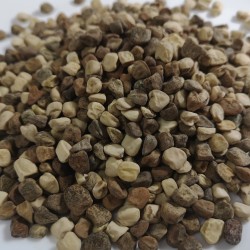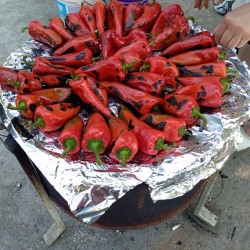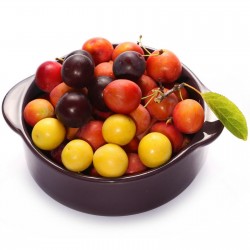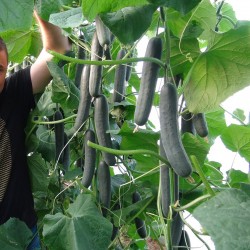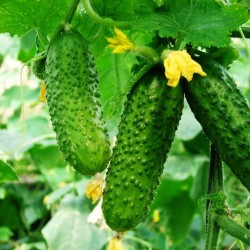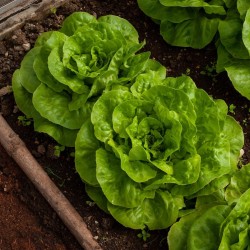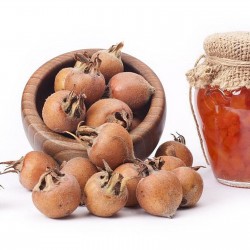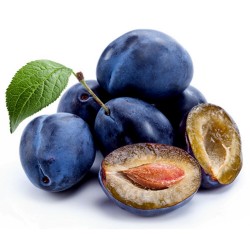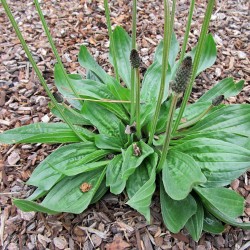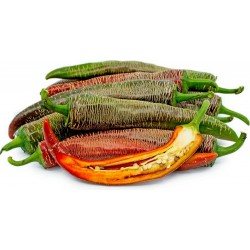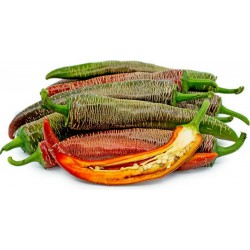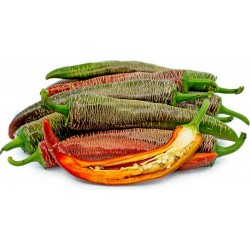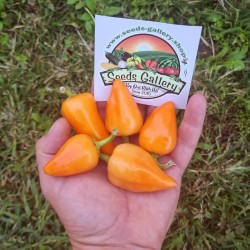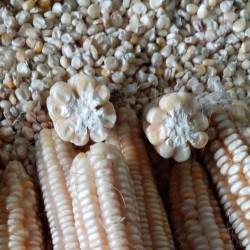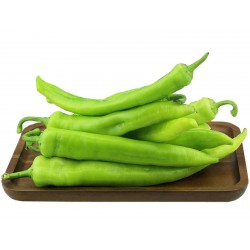Seeds Gallery EU,
5/
5
<h2><strong>Nasiona Babka lancetowata, języczki polne (Plantago lanceolata)</strong></h2>
<h2><span style="color: #f80000;" class=""><strong>Cena za pakiet 560 (1g) nasion.</strong></span></h2>
<p style="color: #202122; font-size: 14px;"><b>Babka lancetowata, babka wąskolistna, języczki polne</b><span> </span>(<i>Plantago lanceolata</i><span> </span>L.) –<span> </span>gatunek<span> </span>byliny<span> </span>należący do rodziny<span> </span>babkowatych<span> </span>(<i>Plantaginaceae</i><span> </span>Juss.). Występuje w stanie dzikim w niemal całej<span> </span>Europie, w<span> </span>Afryce<span> </span>północnej oraz w<span> </span>Azji<span> </span>zachodniej aż do<span> </span>Himalajów<span> </span>i jej części środkowej. Jako gatunek zawleczony obecny jest w Ameryce Północnej, Środkowej i Południowej, na<span> </span>Hawajach, w<span> </span>Australii<span> </span>i na<span> </span>Madagaskarze<sup id="cite_ref-grin_3-1" class="reference">[3]</sup>. Gatunek bardzo zmienny, przystosowuje się do różnych warunków, został rozwleczony na wszystkie kontynenty. W Polsce pospolity.</p>
<h2 style="color: #000000; font-size: 1.5em;"><span class="mw-headline" id="Morfologia">Morfologia</span></h2>
<dl>
<dt>Pęd</dt>
<dd>Pod powierzchnią krótkie<span> </span>kłącze. W czasie kwitnienia wyrastają pędy kwiatonośne osiągające wysokość do 40 cm.</dd>
<dt>Liście</dt>
<dd>Długie, równowąskie, lancetowate, u nasady zwężone w rynienkowaty owłosiony ogonek, skupione są w przyziemne rozety, mają 3–7 równoległych nerwów. Blaszka liściowa przeważnie całobrzega, rzadko z nielicznymi ząbkami.</dd>
<dt>Kwiaty</dt>
<dd>Z rozetek liściowych wyrasta jedna lub kilka bezlistnych szypułek kwiatostanowych o 5 głębokich bruzdach. Szypułka jest prosto wzniesiona lub podnosząca się. Kwiatki są drobne, niepozorne,<span> </span>białe<span> </span>do brunatnoróżowych, zebrane w gęsty, kulisty lub walcowaty, brunatny<span> </span>kłos. Kwiatki osadzone w suchobłoniastych<span> </span>przysadkach. Korona zrosłopłatkowa, ma krótką rurkę i cztery płatki.</dd>
<dt>Owoce</dt>
<dd>Gładkie, błyszczące, czerwonobrunatne nasiona w kształcie czółenek osadzone są po 1–2 w jajowatej<span> </span>torebce.</dd>
<dt>Korzenie</dt>
<dd>Liczne, wiązkowe.</dd>
</dl>
<h2 style="color: #000000; font-size: 1.5em;"><span class="mw-headline" id="Biologia">Biologia</span></h2>
<dl>
<dt>Cechy fitochemiczne</dt>
<dd></dd>
</dl>
<p>Liście zawierają<span> </span>aukubinę,<span> </span>substancje śluzowe,<span> </span>pektyny,<span> </span>garbniki<span> </span>(ok. 6,5%), kwasy:<span> </span>fumarowy,<span> </span>benzoesowy,<span> </span>cynamonowy,<span> </span>waniliowy<sup id="cite_ref-5" class="reference">[5]</sup>, sole mineralne (w tym sole cynku i krzemionkę)<sup id="cite_ref-Leksykon_6-0" class="reference">[6]</sup>,<span> </span>flawonoidy<span> </span>(bajkaleina, skutelareina)<sup id="cite_ref-Poradnik_7-0" class="reference">[7]</sup>.</p>
<dl>
<dt>Rozwój</dt>
<dd></dd>
</dl>
<p>Pędy kwiatostanowe wyrastają począwszy od drugiego roku wegetacji. Roślina kwitnie od maja do września, jest<span> </span>wiatropylna. Jedna roślina wydaje około 1000<span> </span>nasion<sup id="cite_ref-Leksykon_6-1" class="reference">[6]</sup>.</p>
<h2 style="color: #000000; font-size: 1.5em;"><span class="mw-headline" id="Ekologia">Ekologia</span></h2>
<p>Rośnie na<span> </span>łąkach,<span> </span>trawnikach,<span> </span>pastwiskach, przydrożach, zboczach i polanach. Lubi lekkie i przewiewne gleby,<span> </span>czarnoziemne<span> </span>lub gliniasto-piaszczyste. Często spotykana jako roślina ruderalna lub<span> </span>chwast<span> </span>w<span> </span>koniczynie,<span> </span>lucernie. W polskich Tatrach spotykana do wysokości 1367 m n.p.m. W Polsce występuje coraz rzadziej w stanie naturalnym, ze względu na stosowanie<span> </span>herbicydów.</p>
<p>Hemikryptofit. W klasyfikacji zbiorowisk roślinnych<span> </span>gatunek charakterystyczny<span> </span>dla<span> </span>Cl.<span> </span><i>Molinio-Arrhenatheretea</i><sup id="cite_ref-B_8-0" class="reference">[8]</sup>.</p>
<p>Nasiona babki stanowią przysmak<span> </span>kanarków. Rozsiewane są przez zwierzęta (zoochoria) i ludzi (antropochoria).</p>
<p>Jest rośliną żywicielską larw motyli<span> </span>przeplatki aurelii,<span> </span>britomartis,<span> </span>atalii,<span> </span>didymy<span> </span>i<span> </span>cinksii<sup id="cite_ref-9" class="reference">[9]</sup>.</p>
<h2 style="color: #000000; font-size: 1.5em;"><span id="Systematyka_i_zmienno.C5.9B.C4.87"></span><span class="mw-headline" id="Systematyka_i_zmienność">Systematyka i zmienność</span></h2>
<p>Gatunek należy do podrodzaju<span> </span><i>Psyllium</i><span> </span>i sekcji<span> </span><i>Lanceifolia</i><sup id="cite_ref-grin_3-2" class="reference">[3]</sup>. W Polsce występuje w 2 podgatunkach<sup id="cite_ref-A_10-0" class="reference">[10]</sup></p>
<ul>
<li><i>P. laneceolata</i><span> </span>L. subsp.<span> </span><i>lanceolata</i><span> </span>– liście nagie lub słabo owłosione, walcowaty kłos wyrastający na wyraźnie 5-kanciastej szypule o wysokości do 1 m.</li>
<li><i>P. laneceolata</i><span> </span>L. subsp.<span> </span><i>sphaerostachya</i><span> </span>(Wimmer et Grab.) Hayek – liście silnie, wełnisto owłosione (przynajmniej u nasady), kłos kulisto-jajowaty. W klasyfikacji zbiorowisk roślinnych<span> </span>gatunek charakterystyczny<span> </span>dla All.<span> </span><i>Vicio-lathyroidis-Potentillion</i><sup id="cite_ref-B_8-1" class="reference">[8]</sup>.</li>
</ul>
<p>Reveal<span> </span>wymienia jedną odmianę<span> </span><i>P. lanceolata</i><span> </span>L. var.<span> </span><i>sphaerostachya</i><span> </span>Mert. & Koch, którą uznaje za synonim gatunku<sup id="cite_ref-Reveal_11-0" class="reference">[11]</sup>.</p>
<p>Babka lancetowata tworzy<span> </span>mieszańce<span> </span>z<span> </span>babką średnią<sup id="cite_ref-A_10-1" class="reference">[10]</sup>.</p>
<h2 style="color: #000000; font-size: 1.5em;"><span class="mw-headline" id="Nazewnictwo">Nazewnictwo</span></h2>
<p>Inne nazwy zwyczajowe: babka wąskolistna, babka koniczynowa, babka koniczynowata, języczki polne, żywiec.</p>
<p>Synonimy:<sup id="cite_ref-Reveal_11-1" class="reference">[11]</sup><span> </span><i>Plantago altissima</i><span> </span>auct. non L.,<span> </span><i>Plantago lanceolata</i><span> </span>L.<span> </span><i>sphaerostachya</i><span> </span>Mert. & Koch,</p>
<p>Nazwa gatunkowa<span> </span><i>lanceolata</i><span> </span>wywodzi się od kształtu blaszki liściowej.</p>
<h2 style="color: #000000; font-size: 1.5em;"><span class="mw-headline" id="Zastosowanie">Zastosowanie</span></h2>
<dl>
<dt>Roślina lecznicza<sup id="cite_ref-Olechnowicz_4-1" class="reference"></sup><sup id="cite_ref-Ożarowski_12-0" class="reference"></sup><sup id="cite_ref-Gnozja_13-0" class="reference"></sup>
<div class="thumb tright">
<div class="thumbinner" style="font-size: 13.16px;">
<div class="thumbcaption" style="font-size: 12.3704px;">
<div class="magnify"></div>
Liść</div>
</div>
</div>
</dt>
</dl>
<ul>
<li><b>Historia:</b><span> </span>Babka lancetowata jest rośliną znaną od bardzo dawna w lecznictwie. Uważano, że musi ona być silnym środkiem na zranienia skoro nie ginie "nawet na uczęszczanych drogach mimo deptania przez końskie kopyta i rozjeżdżania żelaznymi obręczami wozów". Przewija się w lecznictwie przez wieki. W<span> </span>starożytności<span> </span>zalecano sok z babki na ukąszenia<span> </span>skorpionów<span> </span>i<span> </span>węży, w<span> </span>średniowieczu<span> </span>na złamania i opuchlizny, a także jako antidotum na miłosne czary.<span> </span>Medycyna ludowa<span> </span>roślinę zalecała w leczeniu chrypki, suchego, przewlekłego<span> </span>kaszlu, nieżytów<span> </span>przewodu pokarmowego<span> </span>oraz<span> </span>dróg moczowych, łagodzeniu swędzenia wywołanego ukąszeniem komara.</li>
<li><b>Surowiec zielarski:</b><span> </span>Liść babki lancetowatej (<i>Folium Plantaginis lanceolatae</i>). Surowiec stanowi<span> </span>łodyga<span> </span>odziomkowa i cały lub rozdrobniony, wysuszony<span> </span>liść<span> </span>o barwie żółtawozielonej do brunatnawozielonej, długości do 30 cm i szerokości do 4 cm, z wyraźnym białawozielonym prawie równoległym unerwieniem na powierzchni dolnej. Łodyga odziomkowa jest brunatnawozielona, dłuższa niż liście, o średnicy 3-4mm i głębokim podłużnym bruzdowaniu, z 5-7 widocznymi żeberkami. Powierzchnia jest zwykle pokryta drobnymi włoskami<sup id="cite_ref-FP8_14-0" class="reference">[14]</sup>. Surowiec zawiera składniki<span> </span>irydoidowe, głównie<span> </span>aukubozyd<span> </span>(0,3-2,5%) i<span> </span>katalpol<span> </span>(0,3-1,1%),<span> </span>śluz, około 6,5%<span> </span>garbników, fenolokwasy,<span> </span>kwas chlorogenowy,<span> </span>kumarynę,<span> </span>eskuletynę,<span> </span>flawonoidy,<span> </span>luteolinę,<span> </span>skutelareninę, ponad 1%<span> </span>kwasu krzemowego. Dużą część<span> </span>składników mineralnych<span> </span>stanowią sole<span> </span>cynku<span> </span>i<span> </span>potasu. W świeżym liściu występują<span> </span>enzymy proteolityczne. Według niektórych autorów surowiec zawiera<span> </span>hemolitycznie<span> </span>czynną<span> </span>saponinę. Susz przeznaczony do stosowania w lecznictwie musi zawierać nie mniej niż 1,5% sumy pochodnych<span> </span>kwasu kawowego<span> </span>w przeliczeniu na<span> </span>akteozyd<sup id="cite_ref-FP8_14-1" class="reference">[14]</sup>.</li>
<li><b>Działanie:</b><span> </span>Liść babki lancetowatej stosowany jest głównie jako środek wykrztuśny i rozkurczający mięśnie gładkie<span> </span>górnych dróg oddechowych<span> </span>w mieszankach ziołowych i<span> </span>syropach, ponadto w<span> </span>stanach zapalnych<span> </span>jamy ustnej, krtani – znaczenie lecznicze mają tu śluzy i garbniki które zmniejszają przekrwienie<span> </span>błon śluzowych<span> </span>oraz nadmierną przepuszczalność<span> </span>naczyń włosowatych. Właściwości bakteriostatyczne wykazuje świeży surowiec, też w postaci soku (<i>Succus Plantaginis lanceolatae</i>). Substancją czynną jest w tym przypadku<span> </span>aukubozyd, który pod wpływem zawartej w surowcu β–glukozydazy uwalnia<span> </span>aglikon<span> </span>aukubigeninę<span> </span>o właściwościach bakteriostatycznych. W<span> </span>naparach<span> </span>wodnych przemiana ta nie zachodzi na skutek inaktywacji<span> </span>enzymu, dlatego nie wykazują one działania przeciwbakteryjnego.<span> </span>Odwary<span> </span>działają też nieco ściągająco i słabo moczopędnie. Badania wykazały, że wyciągi wodne z liści babki lancetowatej, stosowane doustnie, pobudzają wytwarzanie<span> </span>interferonu<span> </span>i przeciwciał antywirusowych, a więc substancji chroniących organizm ludzki przed inwazją<span> </span>wirusów. Sok ze świeżych liści babki lancetowatej albo odwar z liści wysuszonych przyspiesza gojenie ran i regenerację naskórka.</li>
<li><b>Dawkowanie:</b><span> </span>Odwar z surowca przygotowuje się zalewając 1 łyżkę liści 350ml ciepłej wody i ogrzewając do wrzenia. Gotować pod przykryciem 5min, odstawić na 10-15 minut i przecedzić. Pić 2-3 razy dziennie po ½ szklanki w nieżycie jelit i biegunce. Ten sam odwar można stosować zewnętrznie do płukań, okładów i przemywań. Do oczu rozcieńczyć przegotowaną wodą w proporcji 1:1. Sok wyciśnięty ze świeżych, zmiażdżonych liści podaje się kilka razy dziennie po łyżeczce jako środek wykrztuśny i przeciwzapalny.</li>
<li><b>Zbiór i suszenie:</b><span> </span>Do celów leczniczych zbiera się liście w pełni wykształcone w okresie kwitnienia od maja do września, zdrowe, nie porażone chorobami grzybicznymi, najlepiej bez ogonka, gdyż ten trudno wysycha. Suszyć je należy cienkimi warstwami w suszarni o dużym przewiewie, ogrzewanej w temperaturze do 40 °C, gdyż w warunkach naturalnych łatwo ciemnieją i tracą wartość (wytwarzają się polimeryzaty aukubiny). Surowiec może pochodzić także z upraw. Babkę wysiewa się z nasion wiosną, wprost do gruntu. Nasiona można łatwo zebrać w stanie naturalnym, gdyż rośliny zawiązują ich dużo (1 roślina daje ok. 1000 nasion). Rośliny wschodzą po 10—14 dniach. Już pierwszego roku liście można zbierać, gdy osiągną długość około 30 cm i szerokość do 4 cm. Są barwy żywozielonej. Babki lancetowatej nie powinno się zbierać w górach i okolicach nadmorskich, gdzie występują dwa inne gatunki, mniej wartościowe —<span> </span>babka górska (<i>P. montana</i>)<span> </span>i<span> </span>babka nadmorska (<i>P. maritima</i>), bardzo podobne do babki wąskolistnej i trudne do odróżnienia przez niewprawnych zbieraczy.</li>
</ul>
<dl>
<dt>Roślina pastewna</dt>
<dd>Posiada dużą wartość pokarmową jako pasza zielona. U bydła wywołuje biegunkę.</dd>
<dt>Roślina ozdobna</dt>
<dd>Czasami uprawiana w celach ozdobnych, najczęściej w tym celu uprawia się<span> </span>kultywar<span> </span>'Marginata' o ozdobnych liściach<sup id="cite_ref-E_15-0" class="reference">[15]</sup>.</dd>
</dl>
<h2 style="color: #000000; font-size: 1.5em;"><span class="mw-headline" id="Uprawa">Uprawa</span></h2>
<p>Plantację utrzymuje się 4–5 lat.<sup id="cite_ref-Leksykon_6-2" class="reference"></sup></p>
<ul>
<li><b>Rozmnażanie</b>: roślinę uprawia się tylko z nasion. Siew wykonuje się wiosną, od marca do kwietnia. Rozstaw 30 × 40 cm, na głębokość 0,5–1 cm. Średnio wysiewa się 2 kg nasion na 1 ha gruntu.</li>
<li><b>Pielęgnacja</b>: odchwaszczanie, spulchnianie ziemi między rzędami, nawożenie.</li>
<li><b>Zbiór i suszenie</b>: liście często bywają zakurzone, dlatego należy je zbierać najlepiej po deszczu i dokładnie przepłukać przegotowaną lub mineralną wodą. Zbioru dokonuje się w okresie kwitnienia od maja do września. Na uprawie jednorocznej zbiór przeprowadza się jeden raz, latem, od drugiego roku – dwukrotnie. Surowiec suszy się w temperaturze 35–40 °C w piekarniku lub rozkładając cienką warstwą w ciepłym miejscu np. na strychu (trzeba wówczas pamiętać, aby je często odwracać, gdyż łatwo czernieją).</li>
</ul>
<br>
<script src="//cdn.public.n1ed.com/G3OMDFLT/widgets.js"></script>
VE 216 (1g)

